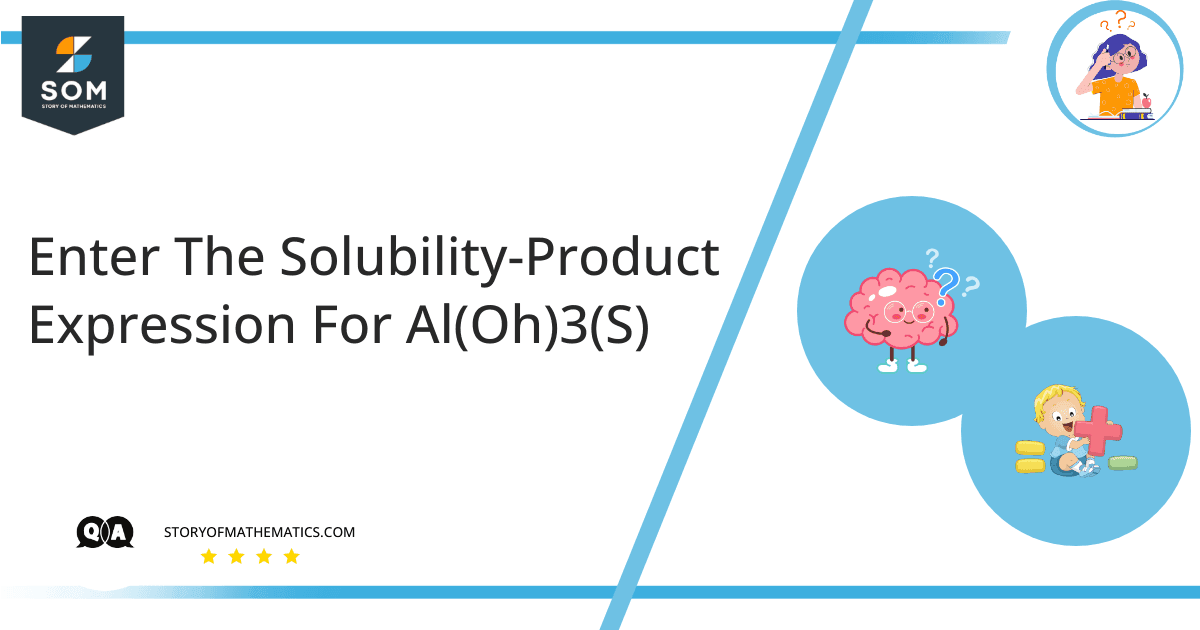
This question aims to develop the understanding of solubility product $ k_{ sp } $ which is related to the solubility reactions and proportions.
To solve this question, we may use a four-step process.
Step (1) – Molar mass estimation of the subject compound employing its chemical formula.
Step (2) – Mass (in grams) estimation of the subject compound that is dissolved per unit liter of the solution.
Step (3) – Number of moles estimation of the subject compound that is dissolved per unit liter of the solution.
Step (4) – Finally the solubility product estimation of the subject solution.
Let’s consider the following solubility equation:
\[ A_{(s)} \longleftrightarrow a \ A_{(a)} \ + \ b \ B_{(a)} \]
Where the ions A and B are the ionic decompositions of C. Factors a and b are the proportions involved in the reaction. The solubility product can be estimated through the use of following equation:
\[ K_{ sp } \ = \ [ A ]^a \ \times \ [ B ]^b \]
Expert Answer
Step (1) – Molar mass estimation of Aluminum Hydroxide $ Al ( OH )_3 $:
\[ \text{Molar mass of } Al ( OH )_3 \ = \ 27 \ + \ 3 \bigg ( 1 \ + \ 16 \bigg ) \]
\[ \Rightarrow \text{Molar mass of } Al ( OH )_3 \ = \ 27 \ + \ 3 \bigg ( 17 \bigg ) \]
\[ \Rightarrow \text{Molar mass of } Al ( OH )_3 \ = \ 27 \ + \ 51 \]
\[ \Rightarrow \text{Molar mass of } Al ( OH )_3 \ = \ 78 \ g/mole \]
Step (2) – Mass (in grams) estimation of Aluminum Hydroxide $ Al ( OH )_3 $ dissolved per unit liter or 1000 milliliter solution:
Since its not given, lets assume it as $ x $.
Step (3) – Number of moles estimation of Aluminum Hydroxide $ Al ( OH )_3 $ dissolved per unit liter or 1000 milliliter solution:
\[ \text{ Moles dissolved in 1 L solution } = \ \dfrac{ \text{ Mass dissolved in 1 L solution } }{ \text{ Molar Mass } } \]
\[ \Rightarrow \text{ Moles dissolved in 1 L solution } = \ \dfrac{ x }{ 78 } \ moles \]
Step (4) – Solubility product estimation.
The solubility equation of given reaction can be written as follows:
\[ Al ( OH )_3 (s) \longleftrightarrow \ Al^{ +3 } ( aq ) \ + \ 3 \ OH^{ -1 } ( aq ) \]
This means that:
\[ [ Al ( OH )_3 ] \ = \ [ Al^{ +3 } ] \ = \ 3 [ OH^{ -1 } ] \ = \ \dfrac{ x }{ 78 } \ mole \]
\[ \Rightarrow [ OH^{ -1 } ] \ = \ \dfrac{ x }{ 26 } \ mole \]
So:
\[ K_{ sp } \ = \ [ Al^{ +3 } ]^1 \ \times \ [ OH^{ -1 } ]^3 \]
\[ \Rightarrow K_{ sp } \ = \ \dfrac{ x }{ 78 } \ \times \ \bigg ( \dfrac{ x }{ 26 } \bigg )^3 \]
Numerical Result
\[ K_{ sp } \ = \ \dfrac{ x }{ 78 } \ \times \ \bigg ( \dfrac{ x }{ 26 } \bigg )^3 \]
Where x is the grams dissolved per unit liter of solution.
Example
For the same scenario given above, calculate the $ K_{ sp } $ if 100 g is dissolved in a 1000 mL solution.
Calculating the number moles of copper chloride $ Cu Cl $ dissolved in 1 L = 1000 mL solution:
\[ x \ = \ \dfrac{ \text{ Mass in 1000 mL solution } }{ \text{ Molar Mass } } \]
\[ \Rightarrow x \ = \ \dfrac{ 100 }{ 78 \ g/mole } \]
\[ \Rightarrow x \ = \ 1.28 \ mole/L \]
Recall the final expression:
\[ K_{ sp } \ = \ \dfrac{ x }{ 78 } \ \times \ \bigg ( \dfrac{ x }{ 26 } \bigg )^3 \]
Substituting values:
\[ K_{ sp } \ = \ \dfrac{ 1.28 }{ 78 } \ \times \ \bigg ( \dfrac{ 1.28 }{ 26 } \bigg )^3 \]
\[ K_{ sp } \ = \ 0.01652 \]
